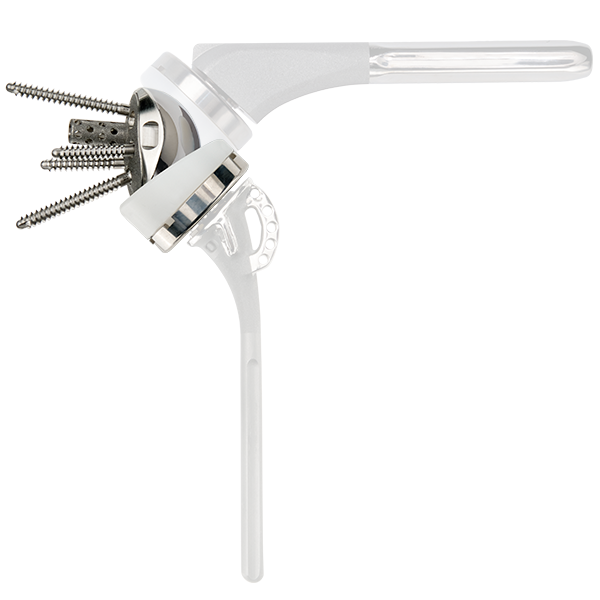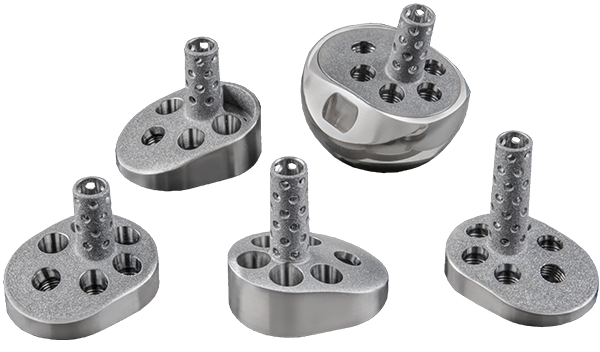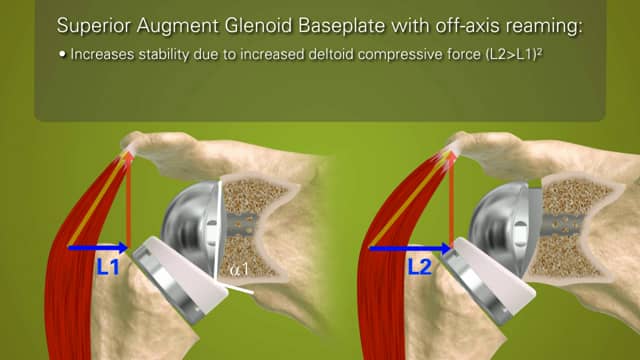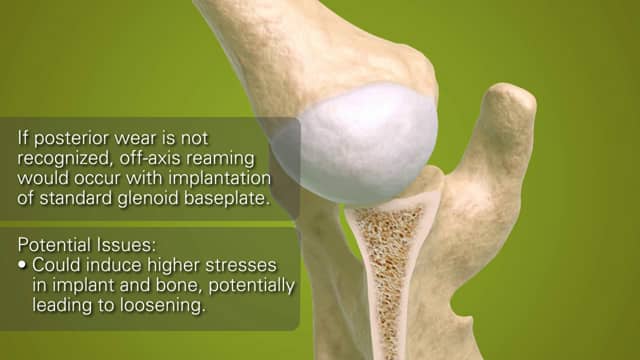Equinoxe ® Reverse System
Equinoxe ® Reverse System
Equinoxe ® Reverse System


Lösungen für anspruchsvolle Glenoidsituationen
They are designed to preserve bone1 and avoid medializing the joint line by building up the eroded side rather than reaming to correct the deficiency. The baseplates feature an anatomic shape with six screw hole options and an innovative bone cage that provides initial and biologic fixation2-4. Superior and posterior augments are available.
Glenoidplatten Animationen
Reverse Biomechanik: von Anfang an
Besonderes Entwicklungsziel des Equinoxe Systems war es, den Humerus zu lateralisieren, um einen anatomischeren „Delta wrap“ Effekt zu erzielen (der zur Stabilität beiträgt) und die Spannung der verbleibenden Manschette zu erhöhen (um die aktive Rotation zu verbessern).5-6
Materialien
- Roche, C. et al. Computer Assessment of Scapula Cortical and Cancellous Bone Removal when Correcting a Posterior Defect Using 3 Different Glenoid Prosthesis Designs. Trans. of the 59th Annual ORS Meeting. 2013.
- Roche, C. et al. Impact of Scapular Notching on Reverse Shoulder Glenoid Fixation. Trans. of the 59th Annual ORS Meeting. 2013.
- Roche, C. et al. A Comparison of Glenoid Fixation using Two Different Reverse Shoulder Designs with an Equivalent Center of Rotation in a Low and High Density Bone Substitute. Trans. of the 59th Annual ORS Meeting. 2013.
- Data on file at Exactech. TS-2011-035 University of New South Wales Test Report: Assessment of Fixation of a Noncemented Tapered Peg in an Ovine Model at 12 and 26 Weeks.*
- Flurin, PH. et al. Comparison of Outcomes Using Anatomic and Reverse Total Shoulder Arthroplasty. Bulletin of the Hospital for Joint Diseases. 2013; Vol 71, Supp 2.
- Roche, C. et al. Impact of Inferior Glenoid Tilt, Humeral Retroversion And Bone Grafting on Muscle Length and Deltoid Wrapping in Reverse Shoulder Arthroplasty. Bulletin of the Hospital for Joint Diseases. 71(4):284-93. 2013.
* These are the results of the cited studies. Individual results may vary. In vitro (bench) test results or laboratory testing may not necessarily be predictive of clinical performance.






